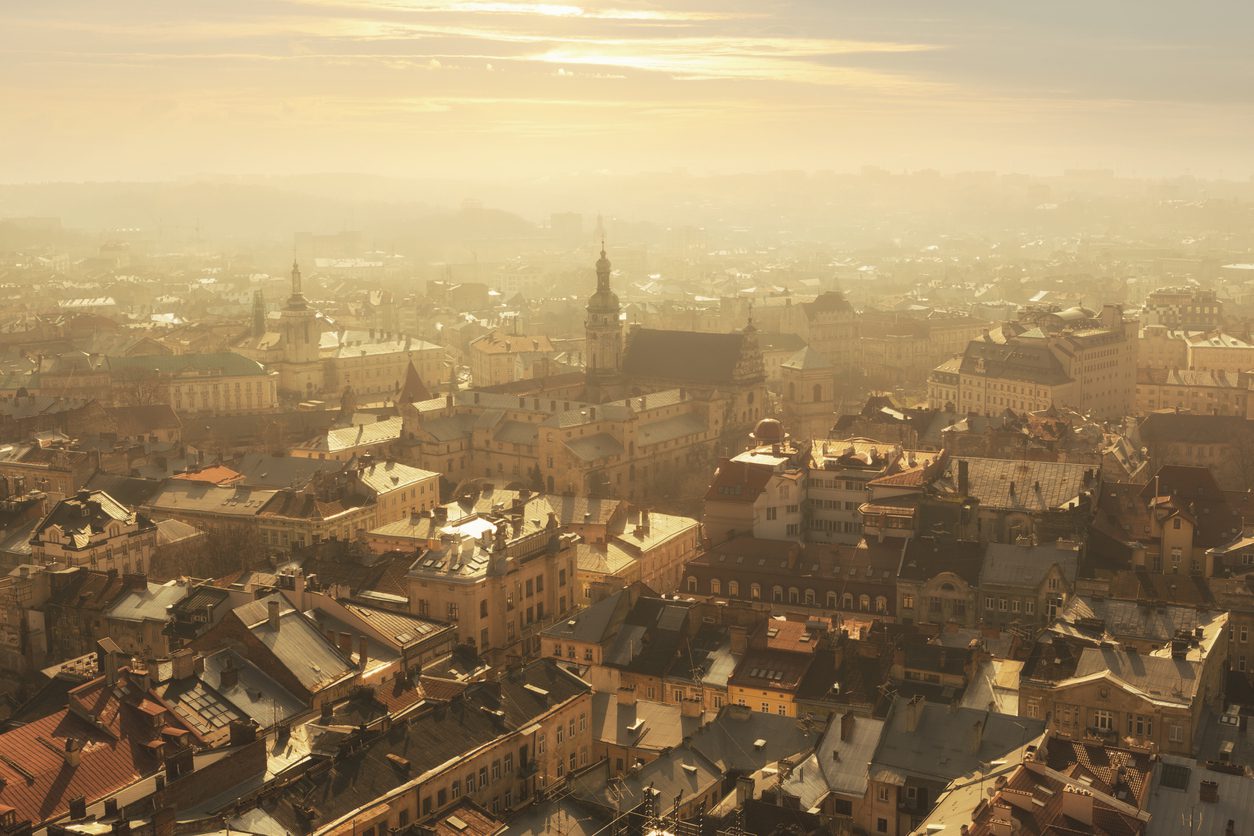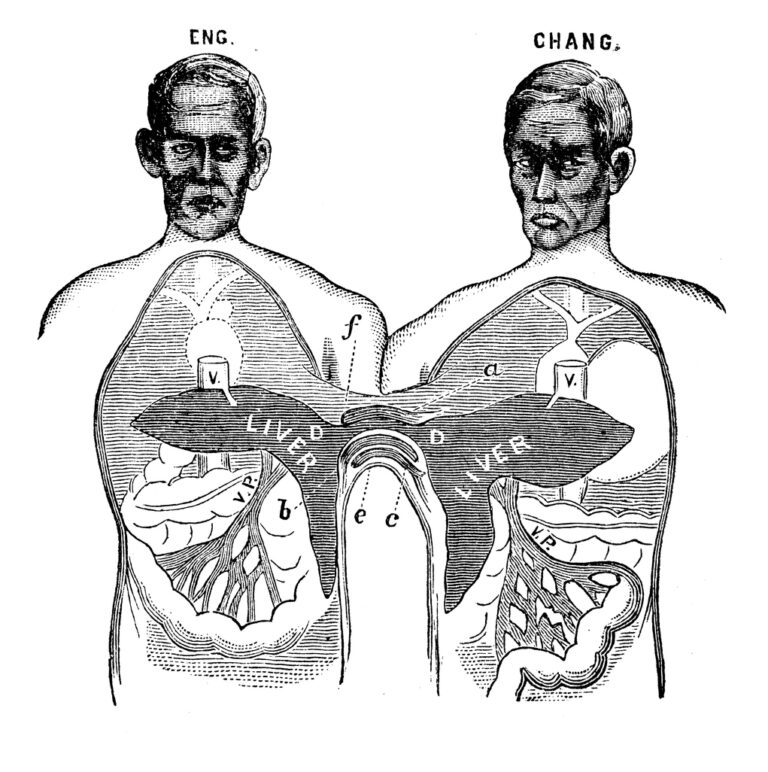Concerns are mounting that Russian invading forces are seeking to push into western Ukraine, after the region of Lviv was subjected to missile strikes over the weekend. Lviv lies 550km west of the Ukrainian capital, Kyiv and its residents have been preparing for war for months.
The strategic importance of their city cannot be overstated. As mayor Andriy Sadovy repeatedly said: “Kyiv is the heart of Ukraine, but Lviv is the soul.”
Sadovy was referring to the city’s pivotal role for creating the modern Ukrainian nation. Lviv and the wider Eastern Galicia region (today Lviv, Ivano-Frankivsk and Ternopil regions) have played a central role in the Ukrainian nation-building process since the second half of the 19th century. But the city’s history and importance – political, religious and cultural – far predate those tempestuous times.
The city has long been both the place where people most strongly identify with Ukraine and a multicultural hub – you only have to look at the many languages in which the city has a name – Lwów in Polish, Lemberg in German, Leopolis in Greek. Like the country as a whole, the city’s cultural, political and economic development is firmly embedded in European history.
Lviv’s many names are variations on a theme: the city of Leo. In 1256, King Daniel of Galicia-Volhynia, a descendant of the rulers of the Kyivan Rus, built a fortress for his son and heir, Leo. He situated it beside an old settlement on the site of contemporary Lviv.
For the first 100 years, the city was ruled by Daniel and his successors. From 1349, it was part of Poland (with a short Hungarian interlude). And in 1772 it was annexed by Austria, under whose rule it remained until the first world war.
But well before the 19th century Lviv was a spiritual centre of the Orthodox world. Between the 15th and 18th centuries, it was the seat of influential Orthodox brotherhoods and home to Ivan Fedorov, who printed the first Bible in Church-Slavonic (the liturgical language shared by Slavic Orthodox Churches).
Lviv also became the seat of three archbishops, from the Roman-Catholic (in 1412), Armenian-Catholic (1630) and Greek-Catholic (1807) churches.
On April 1 1656, in the Latin Cathedral of Lwów, King John II Casimir entrusted the Polish-Lithuanian Commonwealth to the protection of the blessed Virgin Mary and proclaimed her queen of Poland. Two years later, Pope Alexander VII bestowed on Lviv the heraldic motto, Leopolis semper fidelis, meaning: “The city of Leo is always faithful” (to the Catholic Church).
The Greek Catholic denomination is known today as the Ukrainian Greek Catholic Church. It follows the Byzantine (Greek) liturgy but, like the Armenian-Catholic Church, is in full communion with the worldwide Catholic Church in that it recognises the Pope, in Rome, as its head. And most Ukrainians in the region are Greek-Catholics.
Lviv was also a centre of Jewish life. It hosted a Progressive synagogue – Eastern Europe’s first Reform temple, which was destroyed in 1941 by the Nazis – as well as Orthodox and Hassidic synagogues.
In the second half of the 19th century, Lviv and the Eastern Galicia region (two-thirds of whose population were Ukrainians) became the centre of Ukrainian political activism. This was made possible by the liberal climate in Austria-Hungary.
To the east, in its Ukrainian provinces, the Russian Empire was arresting Ukrainian activists, shutting down organisations and banning publications in Ukrainian in an attempt to suppress the growing national movement. Lviv, meanwhile, was an intellectual and political centre, hosting the headquarters of several societies (the Ukrainian Scientific Shevchenko Society, the Ukrainian educational society Prosvita), and many cooperatives and political parties.
On the eve of the first world war, the city had 206,100 inhabitants, half of whom were Polish Roman Catholics, with significant Jewish (28%) and Greek-Catholic (19%) minorities. Polish elites and Polish culture dominated, but in the decades that followed, Lviv was increasingly a contested city. Between 1914 and 1944, the city changed hands seven times.
After the collapse of Austria-Hungary, Ukrainian soldiers took control of Lviv on November 1 1918, making it the capital of the newly proclaimed Western Ukrainian People’s Republic. They were driven out three weeks later by Polish troops who immediately started a pogrom against the Jewish population. The Ukrainians became unwilling citizens of the Second Polish Republic.
In the second world war Lviv was first occupied by Soviet troops, then by the German Wehrmacht – which murdered the city’s Jewish population – and was finally absorbed into the Soviet Union in 1945. Ukrainian nationalist organisations had initially sided with Nazi Germany before they were forced underground. For them, the main enemy was the Soviet Union and they continued their fight until the early 1950s. After the Soviet Union expelled the region’s Polish inhabitant’s, Ukrainians moved to the city and became the overwhelming majority, with Russians as the largest national minority amid an influx from other parts of the Soviet Union too.
As part of the Ukrainian Soviet Socialist Republic, Lviv was industrialised and its population more than doubled. Lviv became a scientific hub with several universities and many research centres. It also became an important centre of the Ukrainian dissident movement. In 1991 Lviv was finally able to celebrate Ukrainian independence. The city has maintained its reputation as the place where people most strongly identify with the Ukrainian nation. Russia’s invasion, though, has spurred a similarly potent sense of identification with Ukraine in Mariupol or Kharkiv.
Lviv and Lvivians have a unique flair, which is difficult to adequately express in words. Since 1998, the historic centre has been listed as a Unesco world heritage site for its architecture, left largely, and remarkably, untouched by the two world wars.
More akin to Vienna or Krakow than Moscow, it boasts gothic, renaissance and baroque influences, with classicism, historicism, art nouveau, art deco, interwar modernism and – mostly in the outskirts – Soviet brutalism, all shaping its skyline. But in contrast to Kyiv, Lviv is less of a bridge between eastern and western Europe and more of a miracle – a central European miracle.







